The best enduro mountain bikes will give you all the confidence to hit technical downhill trails while still maintaining efficient pedalling to get you to the top again.
Enduro racing remains at the forefront of mountain biking, with the demands of epic days on the pedals competing with long, technical descents that challenge downhill courses for their difficulty.
As such, the latest breed of enduro bikes have to be able to spin up hills as well as throw themselves down steep chutes amd rock gardens, and over huge gaps.
We've been testing enduro bikes since their inception and as a result we've tested hundreds of bikes over the years.
Not all enduro bikes are born the same, though, and some will be better suited to long days in the mountains, with pedalling characteristics to boot. Others are basically downhill bikes in disguise – flat-out down the gnarliest of tracks, but possibly more of a slog back up the other side.
We’ve put together a buyer's guide at the bottom of this article to help you choose the best enduro bike for you.
Editor's note: The list was updated on 3 January 2025.
The best enduro mountain bikes of 2025, as rated by our expert testers
Canyon Strive CFR
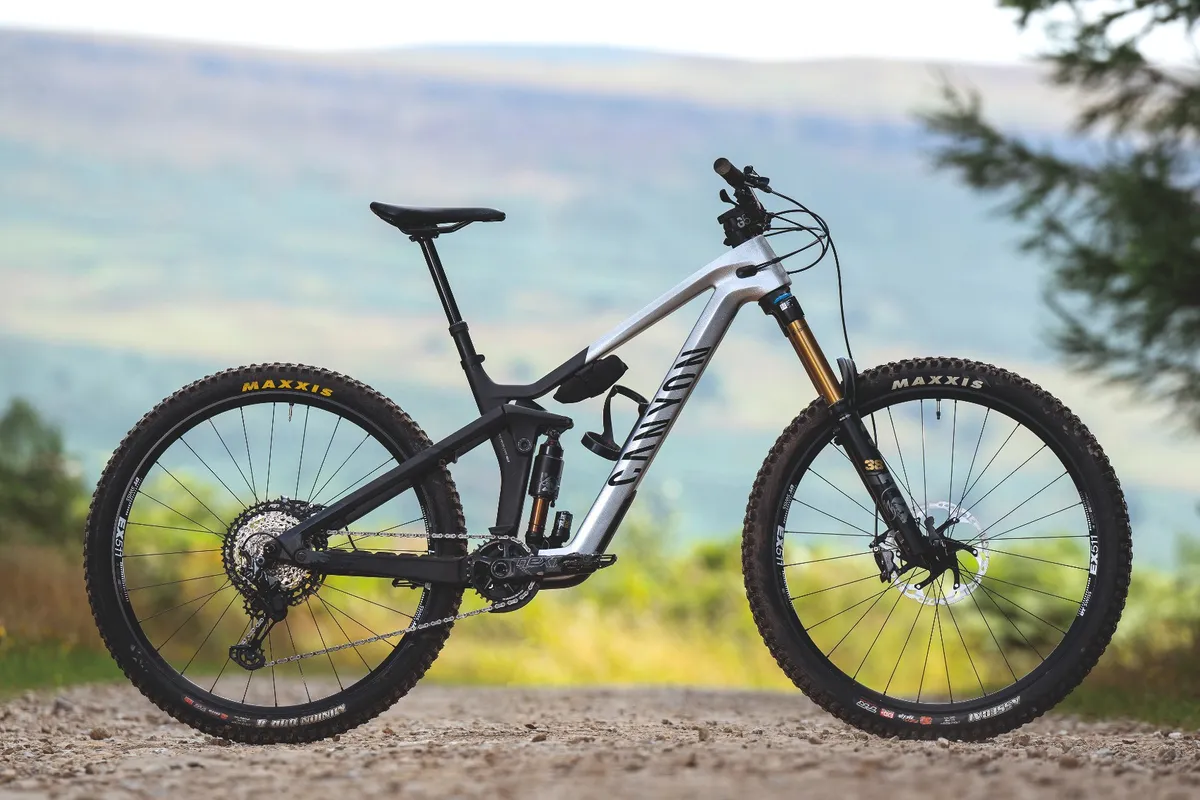
- Price: £5,999 / $7,299 / €6,299 as tested
- Pros: Chassis provides stability at high speeds; race bike feel with high-performance potential
- Cons: Suspension can feel harsh at low speeds
The Strive CFR is Canyon's race bike offering 170mm of travel and 29in wheels.
The Strive is well-specced compared to its contemporaries, with a Shimano XTR drivetrain and brakes paired with a Race Face Next RS crankset.
The Shapeshifter system allows for better on-the-fly adjustment to the bike's geometry and presents a marked improvement on the previous model.
Cotic RocketMAX Gen4 Mullet Silver
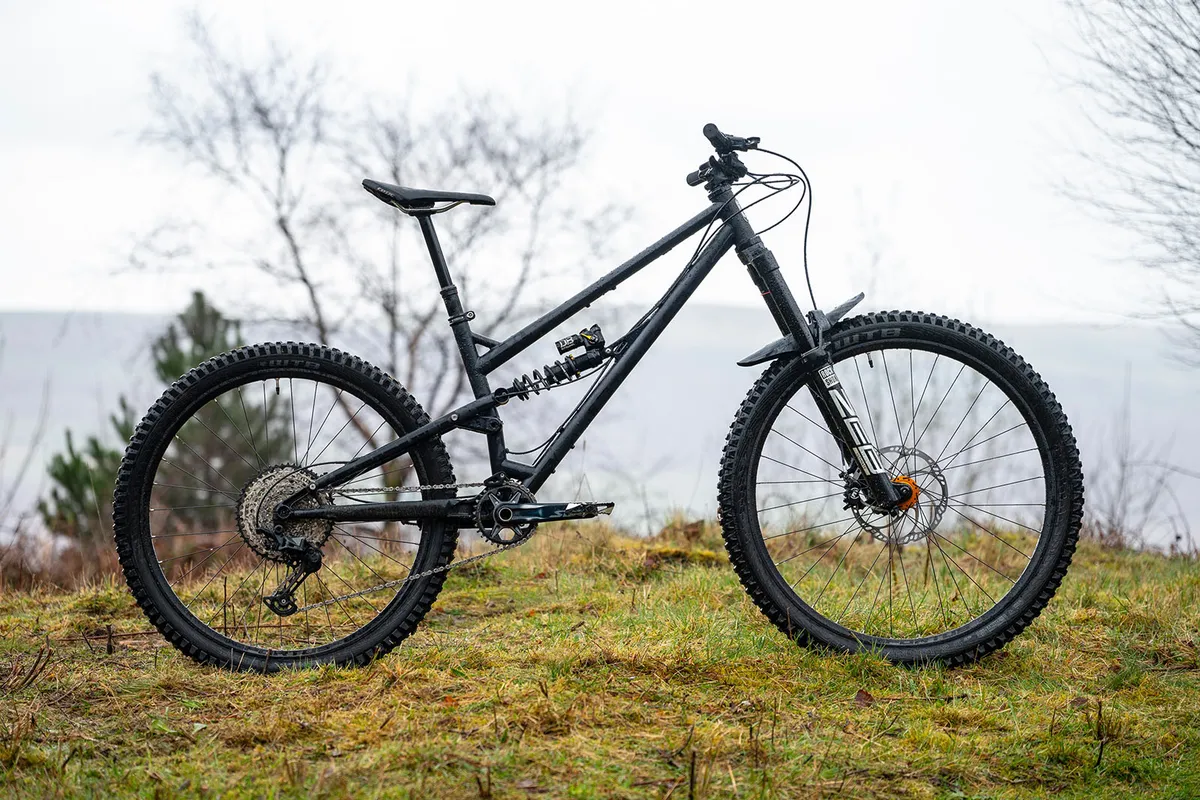
- Price: £4,949 as tested
- Pros: Stable and confident through turns; carries speed well
- Cons: Not as forgiving as other bikes
Cotic's RocketMAX shines when pointed downhill, carrying speed well, and is able to rail corners with ease. The bike can be run as a 29in or in as a mullet, which we tested.
The bike's composure is hard to fault, although we did find it to be a little noisy and less smooth than others, with chain slap being a distraction on bumpy trails.
Cotic offers a host of customisable spec, with our test bike featuring a RockShox ZEB Ultimate fork and a Cane Creek Double Barrel Kitsuma coil shock.
Marin Alpine Trail XR AXS
SQUIRREL_TEXT_13135940

- £5,225 / $5,399 / €5,945 as tested
- Pros: Good geometry; plenty of adjustment; great spec; composed descender
- Cons: Not the best all-rounder
The Alpine Trail XR is a gravity-focused enduro bike, which can be taken down the jankiest trails, delivering a composed ride feel.
Boasting RockShox's Zeb Ultimate and Super Deluxe Ultimate Coil, the bike absorbs anything in its path.
This comes at the cost of its all-around ability, with the bike's climbing ability and mellower trail manners somewhat compromised.
Our tester also found the rear-wheel engagement to be a little slow.
SQUIRREL_13135940
Merida One-Sixty 6000
SQUIRREL_TEXT_13086469
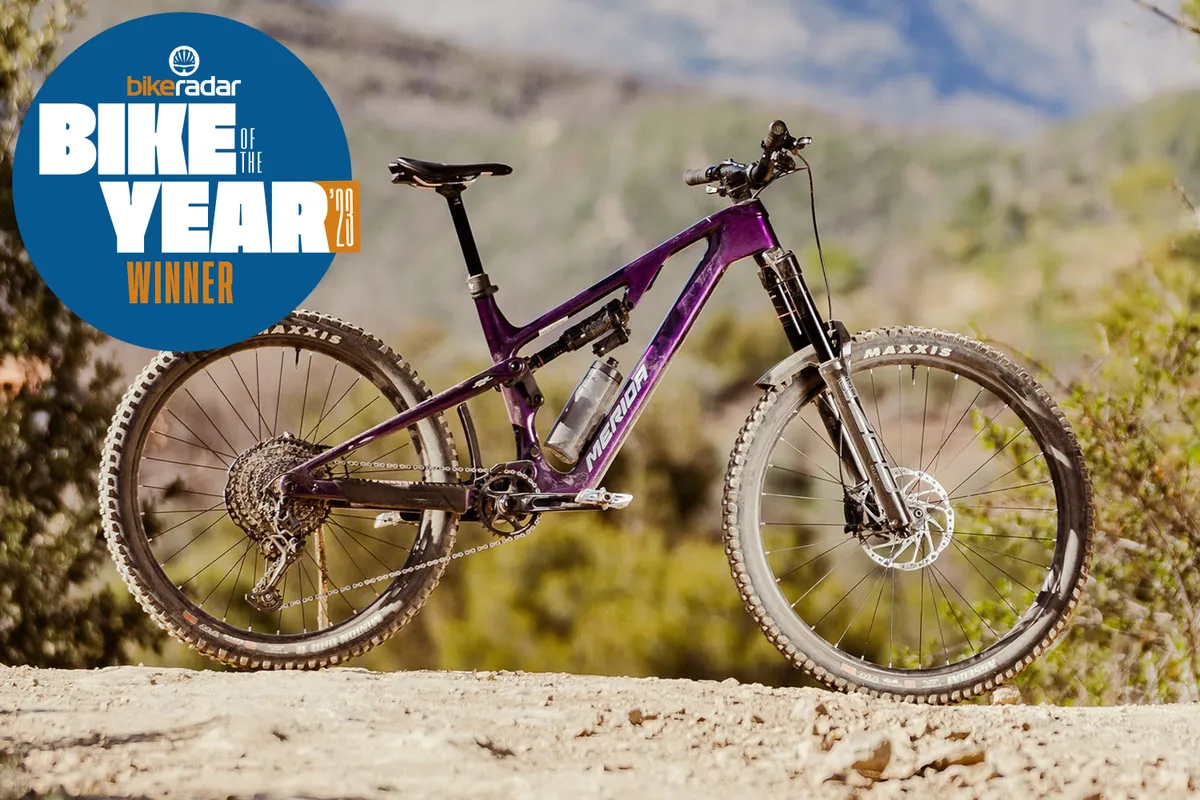
- Price: £4,600 as tested
- Pros: Impressive geometry; well-considered parts
- Cons: Seatpost scores easily
Merida's One-Sixty 6000 is our 2023 Enduro Mountain Bike of the Year, pipping the competition with its exciting and capable ride feel.
The bike offers well-balanced suspension that enables you to smash through technical sections, with the RockShox ZEB Select fork and Super Deluxe Select+ working well to iron out the trail.
A well thought-out spec, featuring a Shimano XT shifter connected to an SLX derailleur, makes for crisp shifting, while keeping the price point to a minimum.
The bike is seriously capable, lapping up gnarly trails while maintaining a fun, flickable character.
SQUIRREL_13086469
Norco Range C1
SQUIRREL_TEXT_13123917
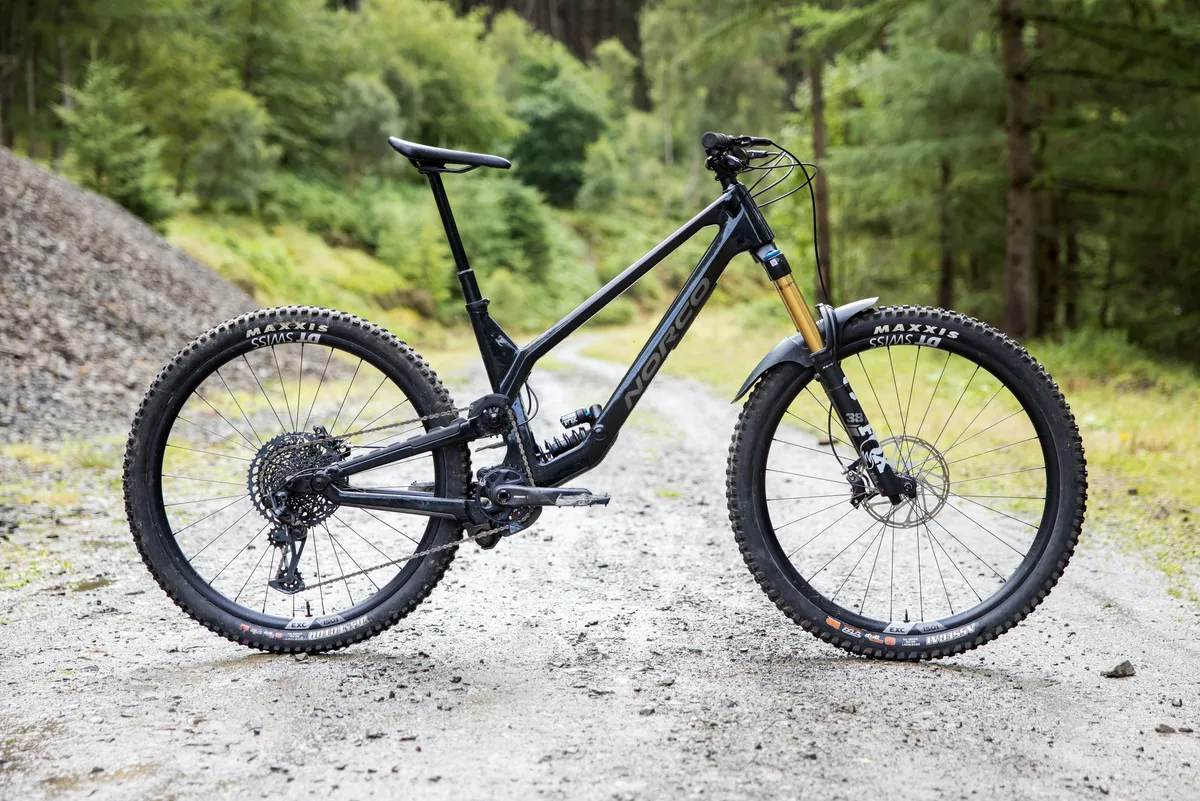
- Price: £8,999 / $8,249 / €9,999 as tested
- Pros: Excellent suspension with impressive descending performance
- Cons: Pedal bob when climbing
The Range C1 is a hard-charging gravity monster, with smooth suspension that's helped by a well-considered geometry.
While the Range C1 is designed for hard-hitting gravity-fed descents, it also performs well on mellower trails considering its bulk.
The geometry isn't the most aggressive out there, which makes for a comfortable climbing position for long days in the saddle, although the suspension provides some pedal bob.
Norco has given the Range C1 a spec list that is all but impossible to upgrade, which is quite the task considering its asking price.
SQUIRREL_13123917
Propain Spindrift Al MX Performance
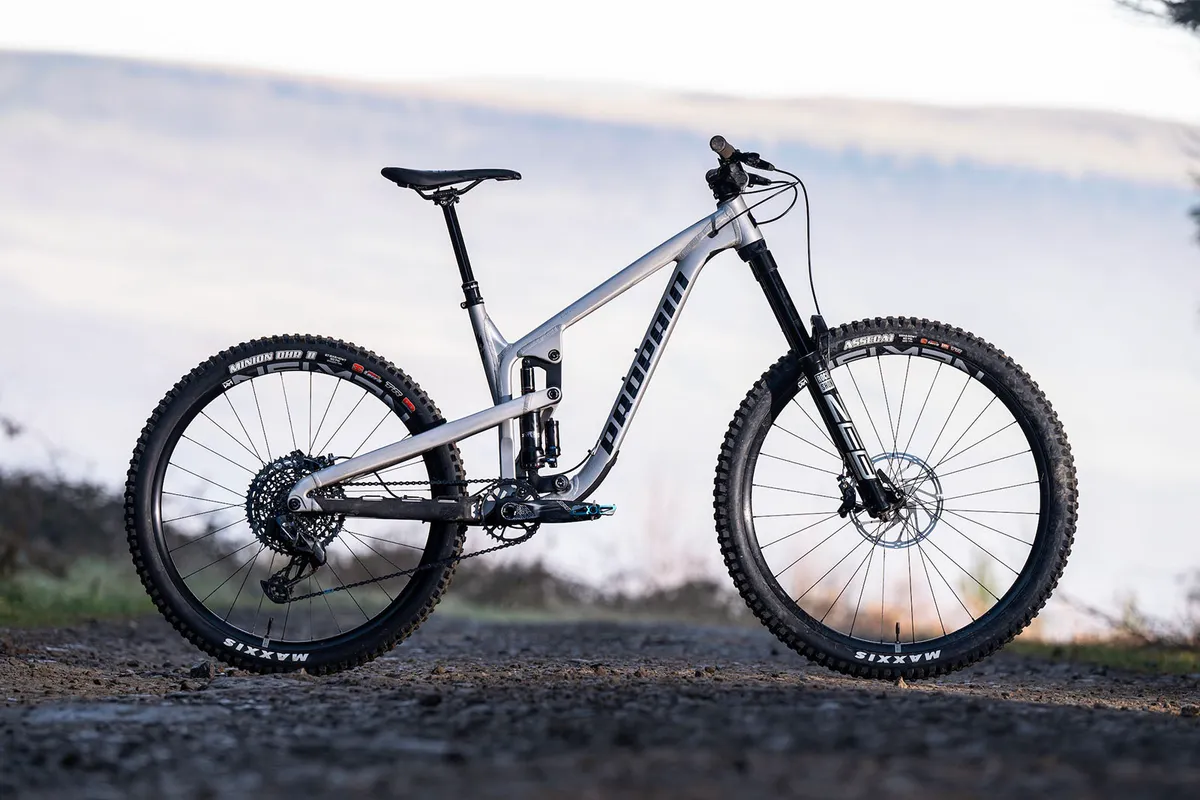
- Price: £5,013 / $5,253 / €5,013 as tested
- Pros: Pedals well for its long travel; alloy frame just as capable as carbon rivals
- Cons: Upgraded shock may need a retune
Propain's Spindrift Al MX Performance is a freeride-focused long-travel bike aimed at bike parks and gnarly downhill trails.
On the hills, we found ourselves reconsidering the stereotypes of long-travel bikes, with the Spindrift proving to be an efficient climber despite its 180mm of front and rear travel.
While it wasn't XC quick, a good seating position and supportive platform made it rival most enduro bikes up the hills.
When pointed down the trail, the bike felt happy to charge through the roughest stuff and gobble up hard hits with ease. However, we found the shock struggled with high-frequency pumps due to a medium compression and rebound tune.
This didn't reduce confidence in the bike, but would be something we'd change if we were riding more natural trails.
Trek Slash 8 Gen 6
SQUIRREL_TEXT_13146241
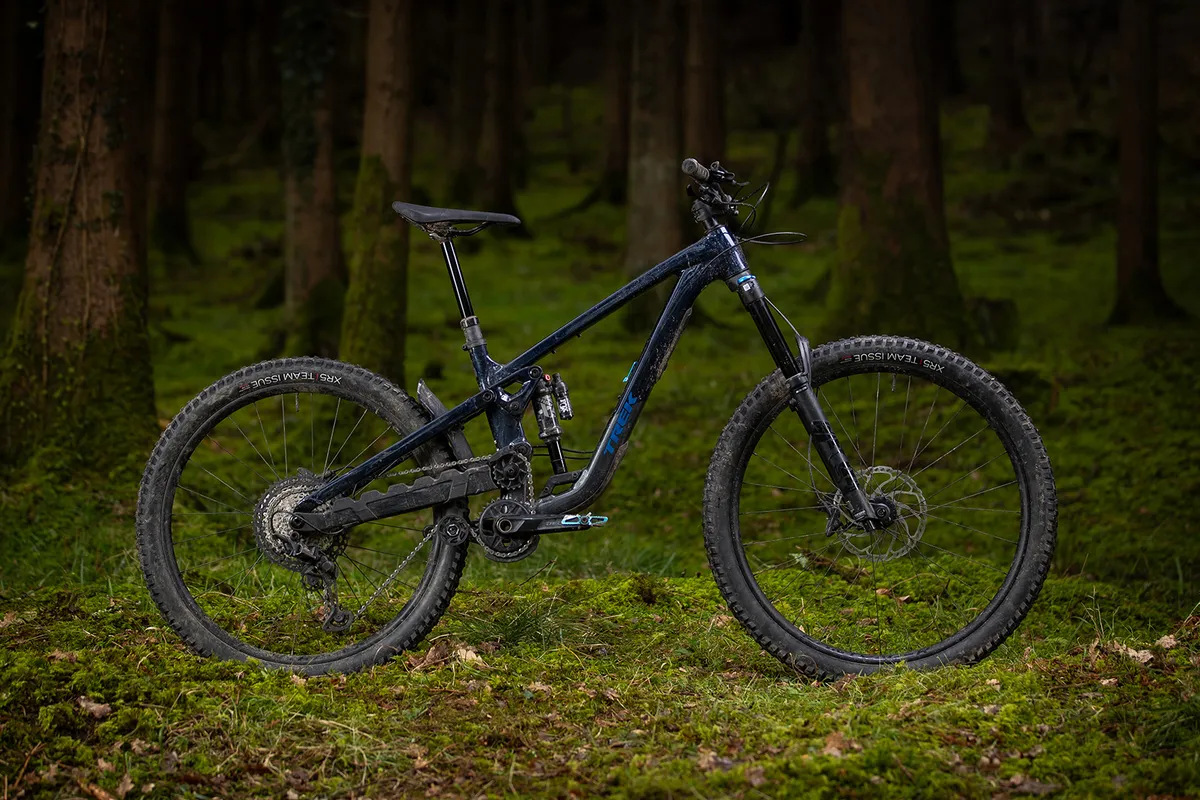
- £4,250 / $4,400 / €4,499 / AU$7,000 as tested
- Pros: Great geometry; calm yet playful; good spec choice
- Cons: Tyres are tough enough; fork needs fine-tuning
The Slash 8 Gen 6 has an excellent geometry that helps keep the bike feeling composed at high speeds, while maintaining a playful character.
This is in part down to the rear suspension, which is supple off the top and provides plenty of support deeper into the travel.
Our tester found the front fork required careful tuning to compensate for an initial lack support, although this was soon remedied.
SQUIRREL_13146241
YT Capra 29 Core 4
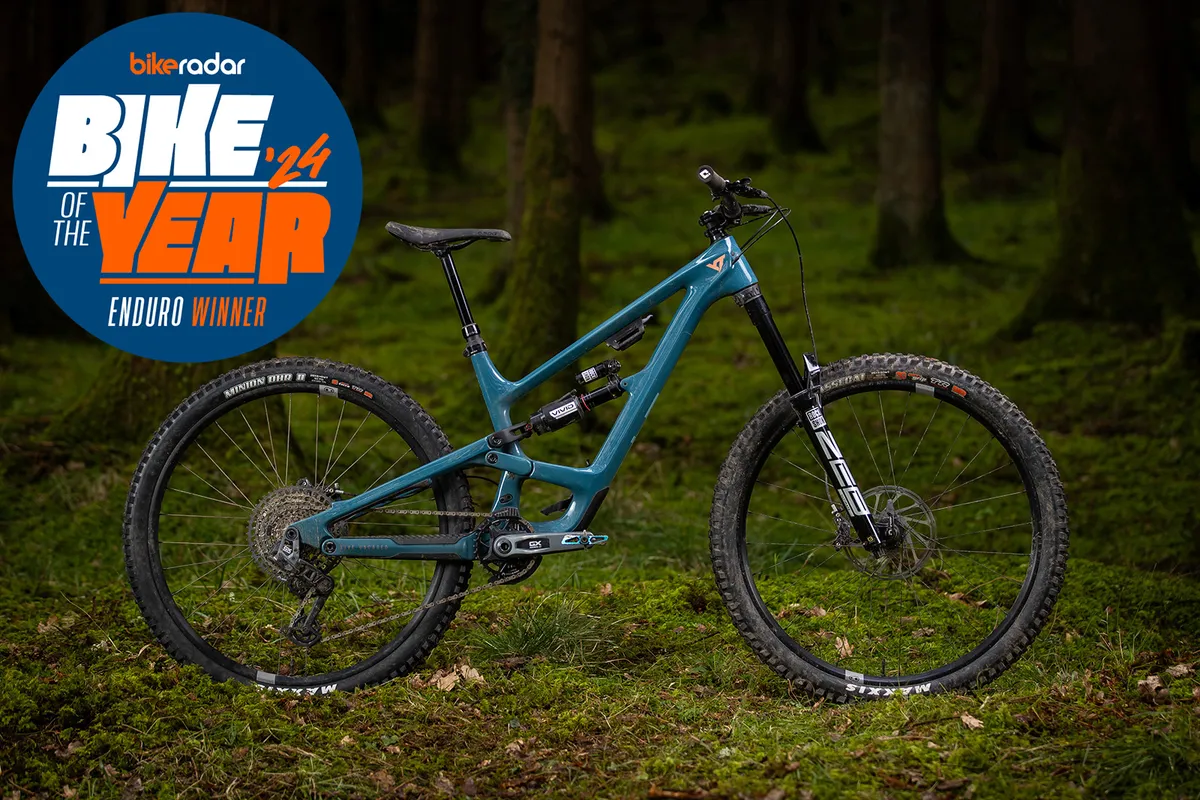
- Price: £4,999 / $5,499 / €4,999 as tested
- Pros: Great spec for the money; consistent performer on varying trails; composed at speed
- Cons: Shock tune not suited to lighter riders
YT's Capra 29 Core 4 offers great value for money, with a RockShox Zeb Ultimate fork and Vivid Ultimate shock.
The frame has been around for a while now, but it still offers a playful ride on various types of trail, carrying momentum well on mellower sections while remaining composed at high speeds.
The Capra 29 Core 4, with its spec upgrades, provides a calmness and pace few can rival.
Bird Aeris 9 Shimano 12-speed
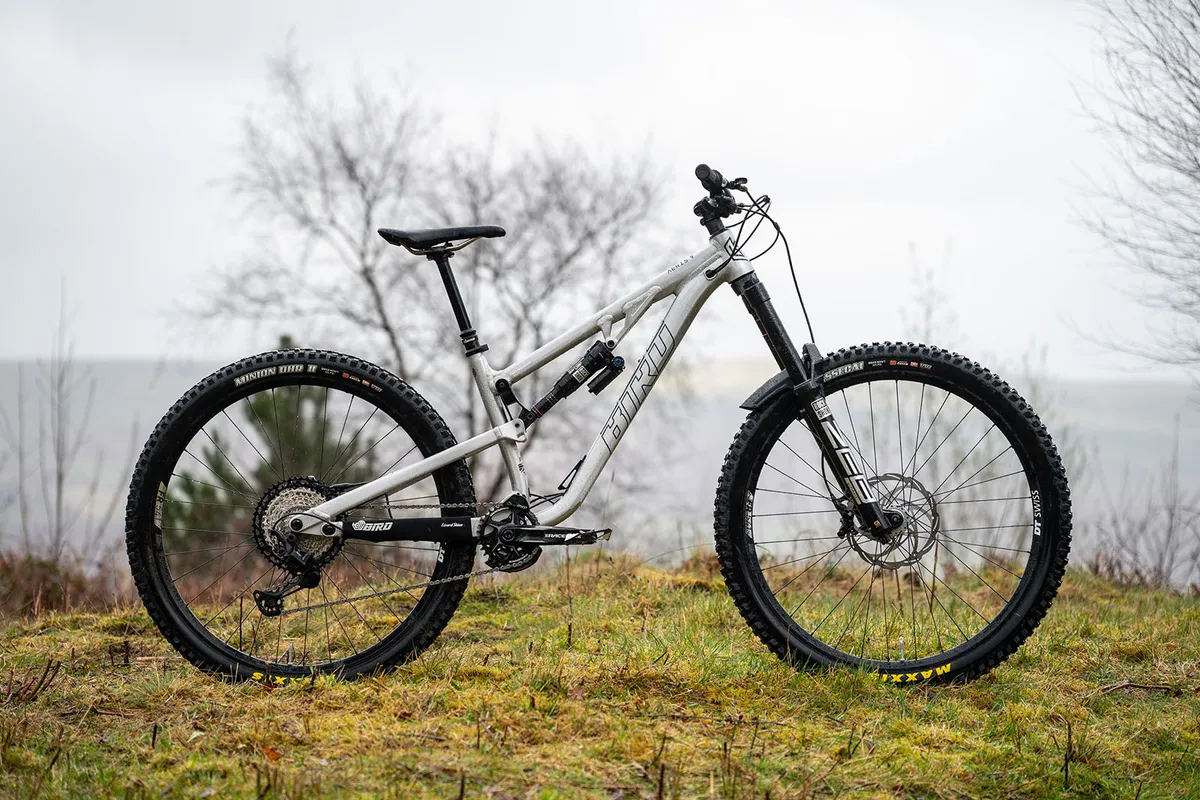
- Price: £4,333 as tested
- Pros: Good value for money with custom build options; well-balanced geometry
- Cons: Not the most responsive ride
Bird's Aeris 9 Shimano 12-speed offers a competitive build for the money, with a RockShox ZEB Ultimate RC2 fork and RockShox Super Deluxe Ultimate shock used to gobble up the bumps.
The Aeris 9 offers masses of stability and security through technical sections, providing plenty of rider confidence when you need it most.
We found the bike lacked a little when it came to playfulness, being focused more on heavy hits and carrying speed through rough terrain.
Bold Unplugged Ultimate
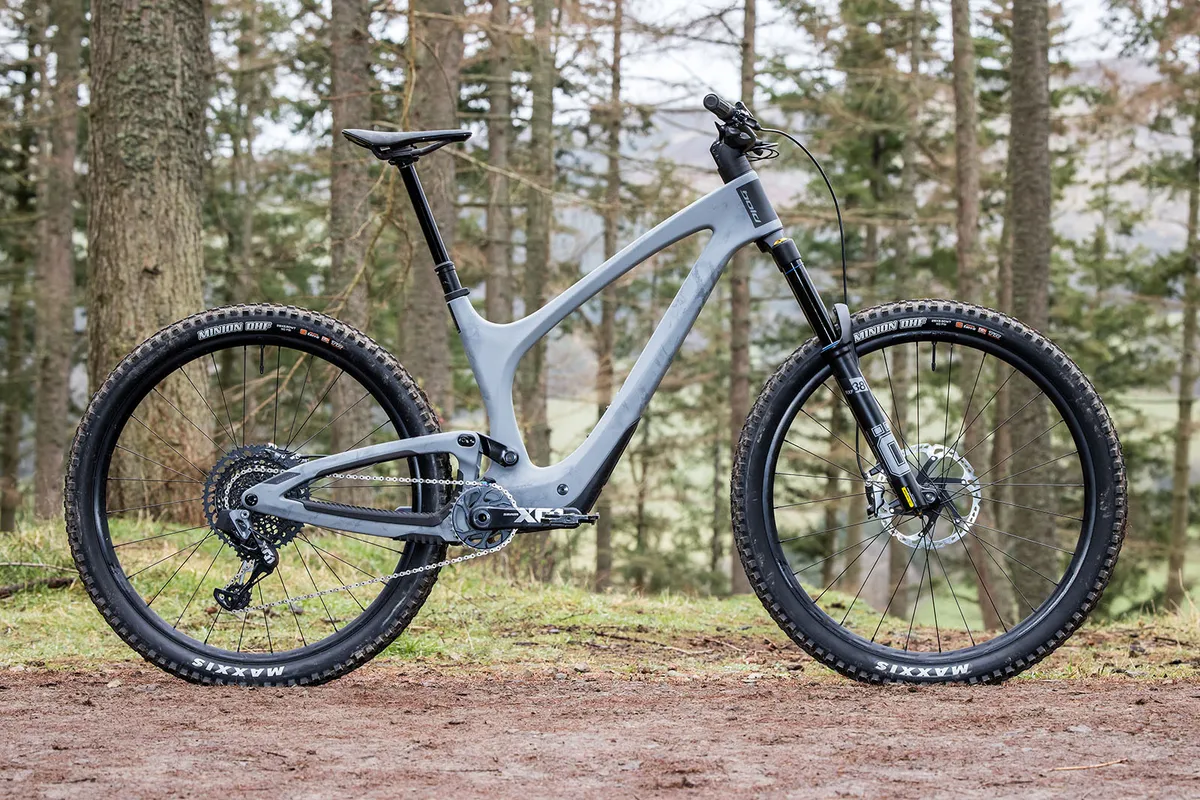
- Price: £10,999 / $10,999 / €10,999 as tested
- Pros: Balanced geometry; stellar climbing performance
- Cons: Limited customisation
Bold's Unplugged Ultimate offers high levels of innovation with its neatly integrated rear suspension, one-piece Syncros cockpit and comprehensive in-built toolkit.
The bike features 160mm of rear travel controlled by a Fox Float X Nude Factory hidden in the frame, while the front of the bike is supported by a 170mm Öhlins RFX38 M.2 fork.
We found the ride to be superbly balanced, with precise and playful handling complemented by a calm and capable ability through the gnarliest terrain.
This continues when faced with a hill, because the modern geometry and TracLoc suspension system makes spinning up easier than on its contemporaries.
While its design causes restrictions in spec choice, the Unplugged is without doubt a superbike – and is priced accordingly.
Canyon Strive CFR Underdog
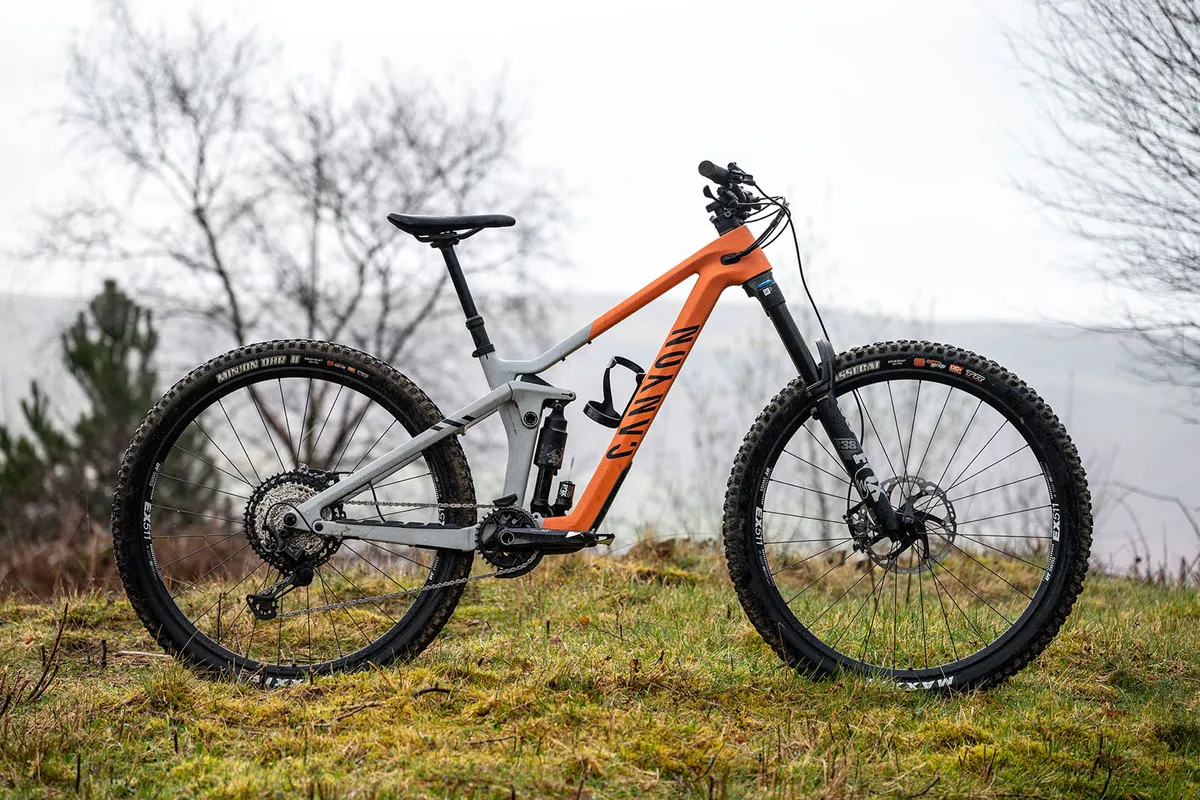
- Price: £4,799 / $4,999 / €4,999 / AU$7,399 as tested
- Pros: Shapeshifter helps on the hills; ground-hugging suspension
- Cons: Not the liveliest ride
Canyon's Strive CFR Underdog is the German brand's lowest-tier enduro race bike. It features meaningful geometry adjustment and Shapeshifter technology that can steepen the seat tube angle for climbing.
The Strive CFR Underdog has a calm demeanour on steep terrain and goes a long way to boost rider confidence, though the bike requires more effort than its competition on more sedate trails.
Gearing and brakes come in the form of Shimano XT, while a Fox 38 Performance Elite fork and X2 Performance rear shock are used to eat up the trail.
Canyon Torque Mullet
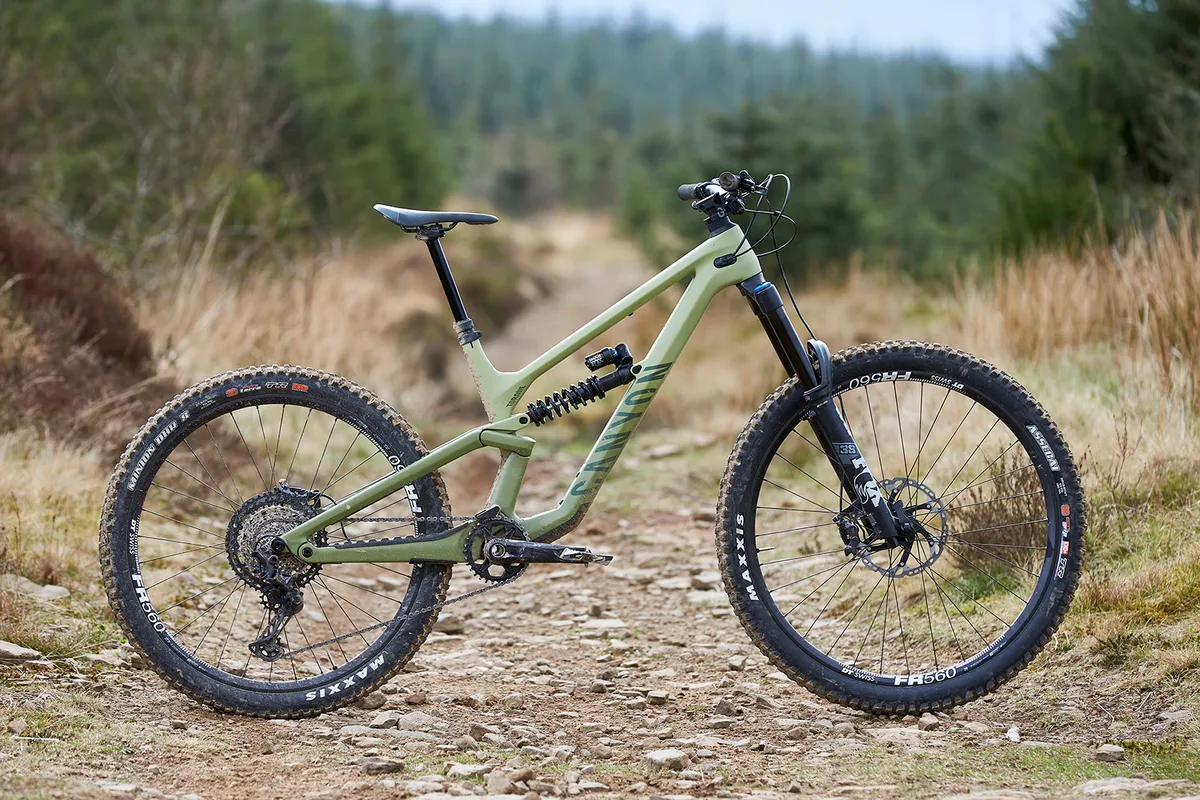
- Price: £4,499 / $5,399 / €4,799 / AU$7,299 as tested
- Pros: Balanced ride feel from sorted geometry; good spec for its price
- Cons: Not quite as grippy and ride-smoothing as others
The Torque is now available as a 29er, 27.5in bike or this mullet option with a carbon frame and in all sizes except small. It comes with 175mm of travel out back from its Fox DHX2 Factory shock and a Fox 38 Performance Elite GRIP2 fork with 170mm travel.
There's a flip chip built in that changes geometry by 0.5 degrees and bottom bracket height by 8mm.
The Torque isn't quite a full-on enduro bike; we didn't feel it had quite the grip or bump-swallowing ability of the best. The updated Canyon Strive is designed more specifically to fit that mandate.
As usual with Canyon, you get a great spec for the price, with Shimano XT and DT Swiss wheels with Maxxis tyres.
Downhill performance delivered fun by the bucketful, with well-balanced, predictable handling. There's a bit more feedback over bumpy terrain than some of its rivals though.
Cube Stereo ONE77 C:68 TM 29
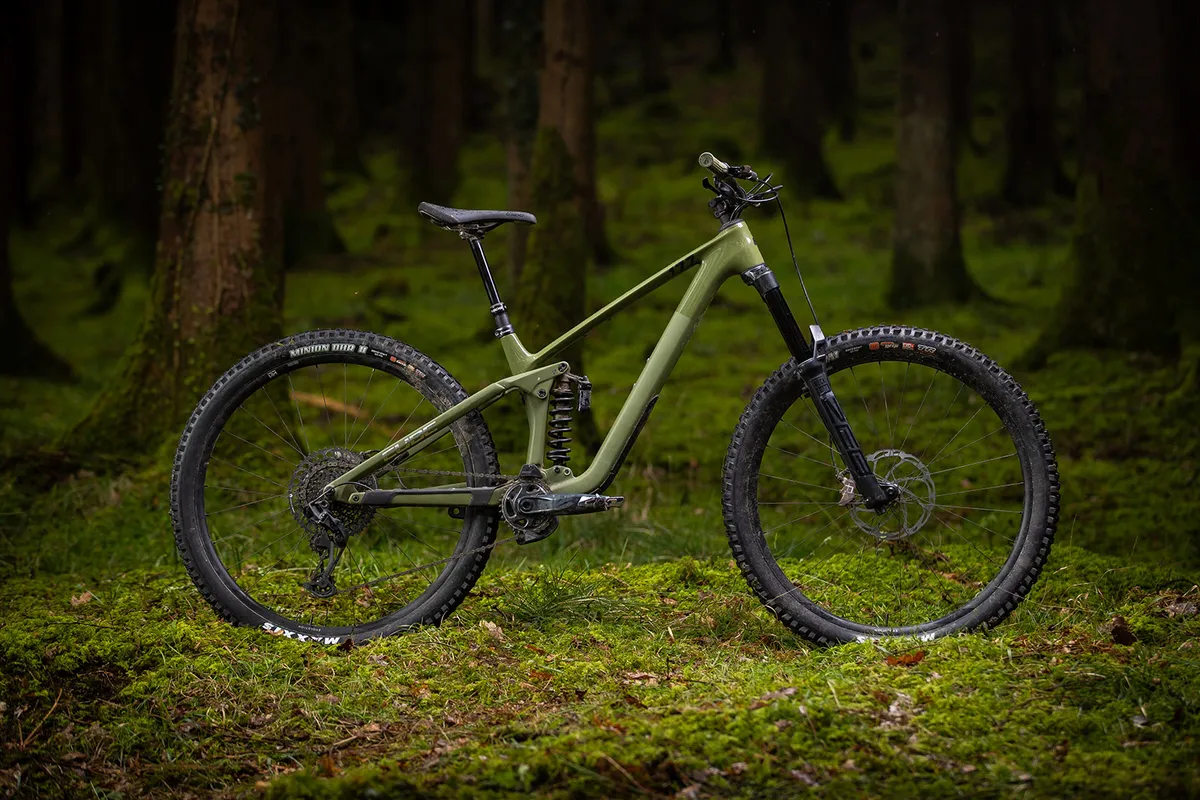
- £4,499 / $4,399 as tested
- Pros: Well-considered spec; nimble and lively ride; efficient power transfer
- Cons: Feedback through the bar causes fatigue
The Stereo ONE77 C:68 TM 29 feels efficient on the uphills, while maintaining a capable and accurate character on the descents.
It's not as gravity-focused as other bikes on this list, presenting itself more as a long-travel trail bike than a heavy-hitting enduro bike.
Our tester found the bar to translate a lot of feedback from the trail below, causing fatigue.
Deviate Highlander II
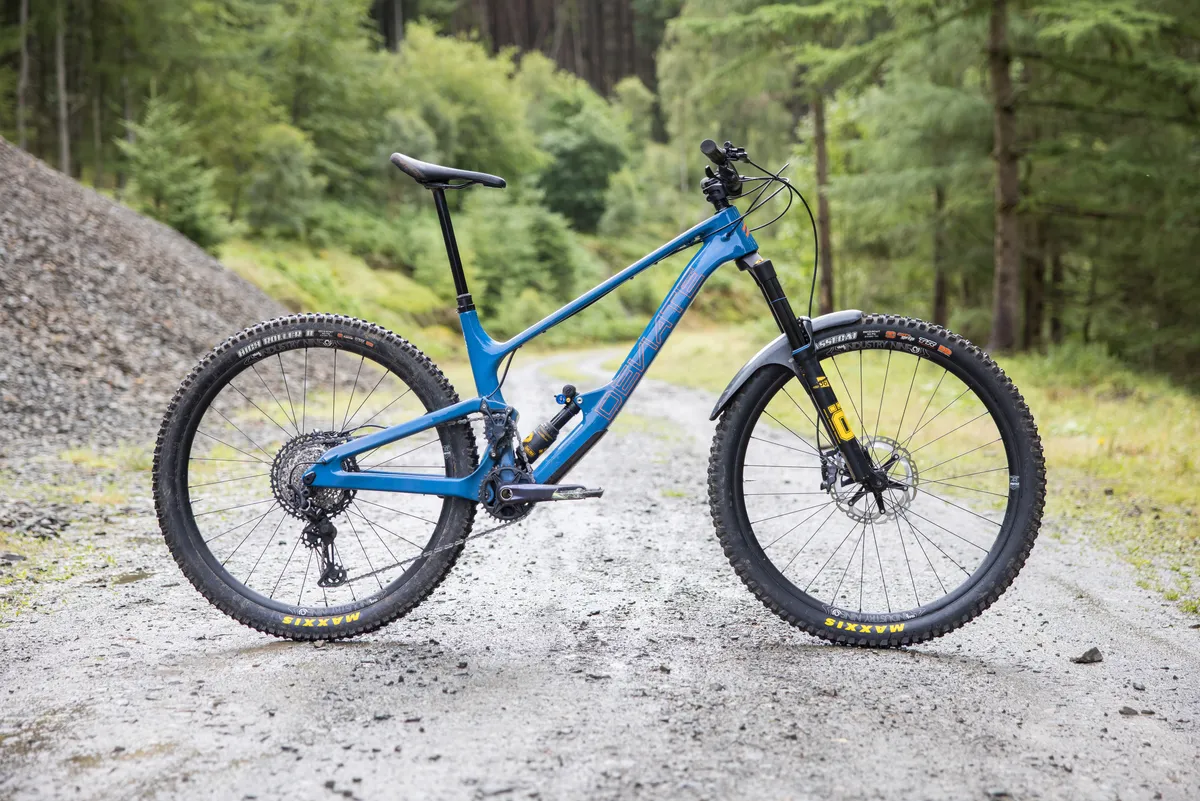
- Price: £7,050
- Pros: Impressive suspension; excellent pedal efficiency
- Cons: Head angles could be slacker to meet performance potential
While it only has 145mm of rear-suspension travel, the Highlander II is designed for everything from epic days in the saddle to bike park laps.
The high-pivot suspension soaks up bumps, providing for smooth and calm descending, while remaining composed uphill, resisting pedal bob.
While the geometry is relatively balanced, the relatively steep 65-degree head angle makes it twitchier and harder to manage on steep turns.
Devinci Chainsaw GX 12S
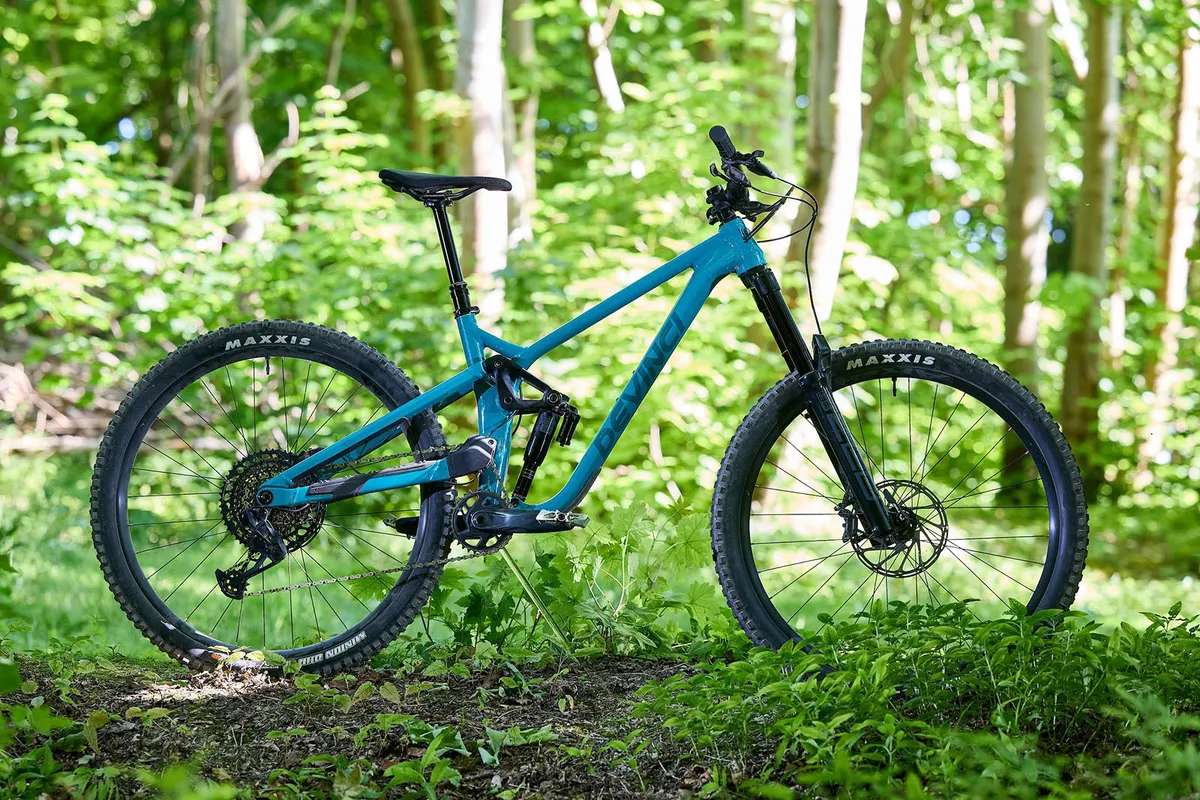
- Price: £4,999 as tested
- Pros: Impressive downhill performance; robust design
- Cons: Chain guide adds drag
The Chainsaw is designed for bike park laps and steep downhill terrain, featuring a high-pivot suspension design that delivers 170mm of rear travel.
While it's not destined for climbing prowess, the bike will get you up a hill comfortably, though the chain guide at the bottom adds drag. We found removing it made a significant difference.
The Chainsaw proves seriously fast downhill, with the rear end soaking up bumps of all sizes and frequencies, while still remaining engaging on smoother tracks, unless the gradient is too mellow.
The bike suits aggressive riders smashing out big features, and would make a good seasonaire bike.
Giant Reign 1
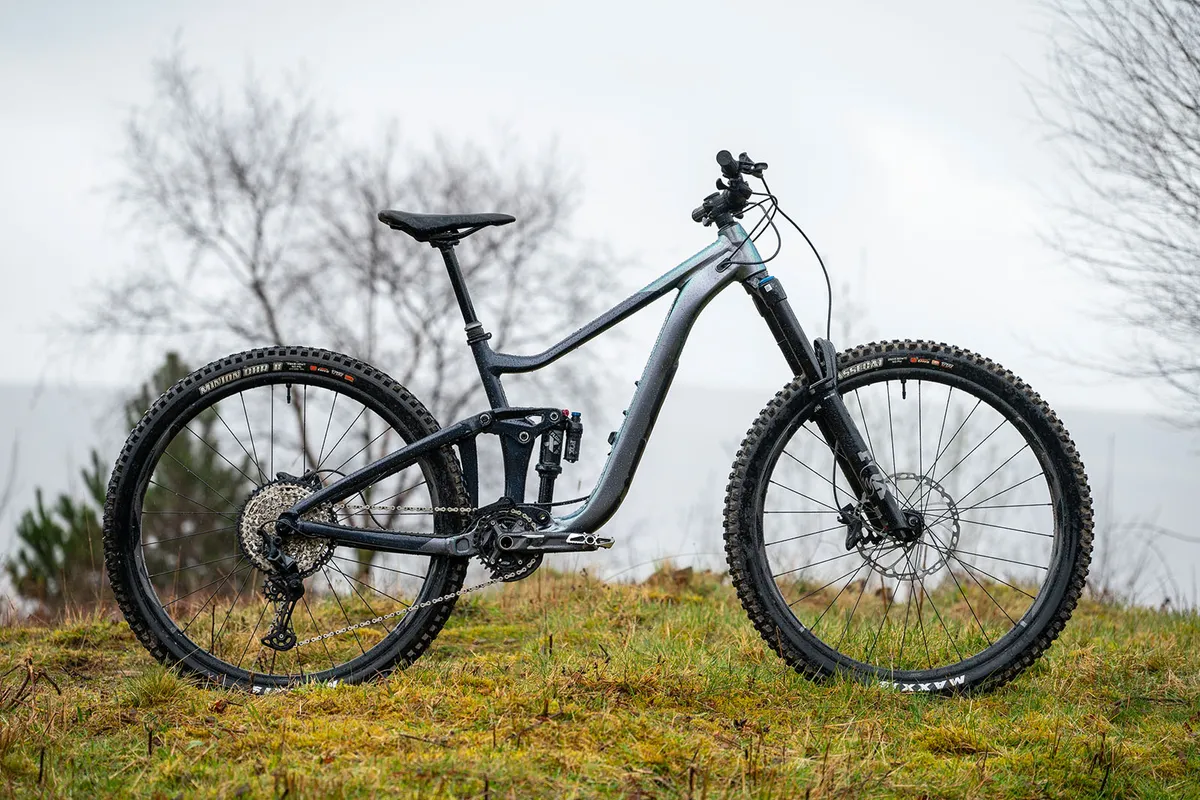
- Price: £3,999 / €4,499 / AU$5,699 as tested
- Pros: Well-considered spec for price; incredibly capable
- Cons: Not the fastest through the rough
Giant's latest Reign now has 160mm of rear travel, bringing it up to date with a lot of the other bikes on this list.
The Reign 1 offers good spec, with quality components such as a Fox 38 Performance Elite fork and a Float X Performance Elite rear shock bolted to a well-refined frame.
The bike comes with meaningful geometry adjust that allows for slack, medium and steep ride settings to cater for the type of riding you do.
Giant's Reign 1 descends quickly, offering racers and riders high levels of confidence in technical sections, though we found the cockpit a little stiff on rough terrain.
Hope HB.916
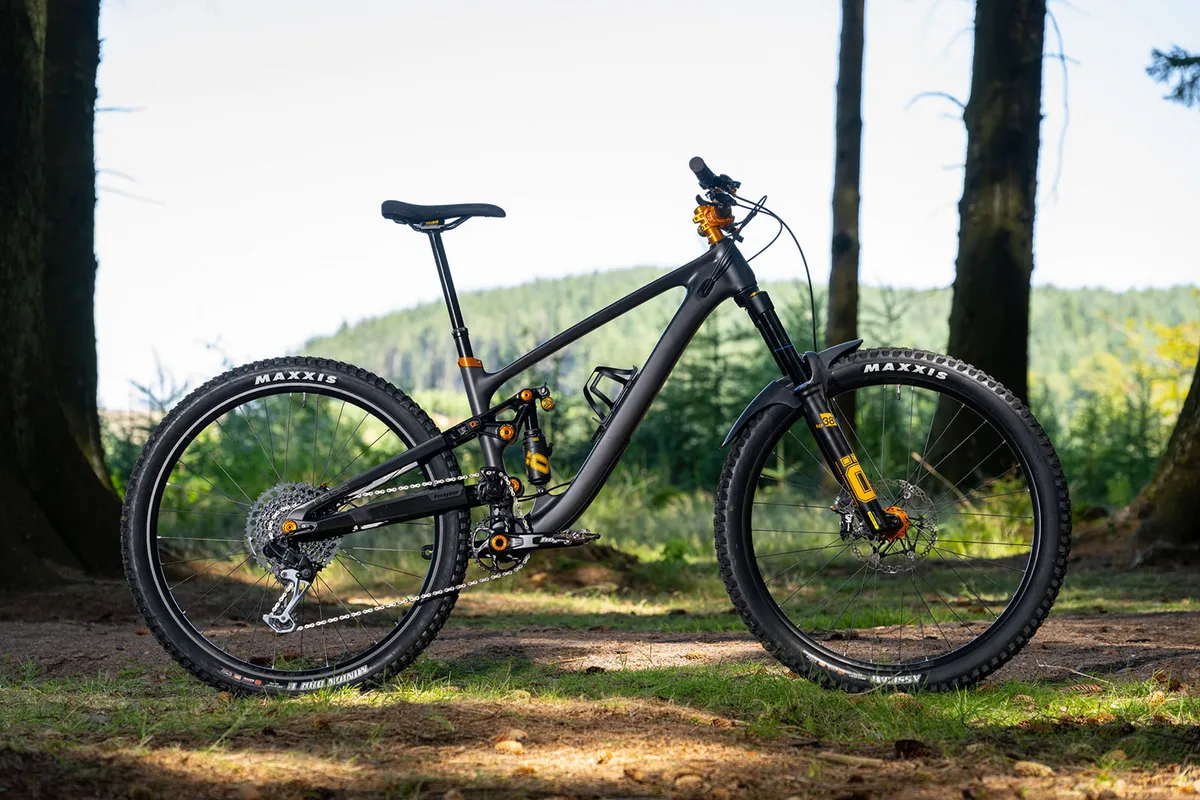
- Price: £6,995 as tested
- Pros: Impressive geometry with dependable spec; calm and controlled through the rough stuff
- Cons: Suspension is hard to set up for lighter riders
Hope's new HB.916 enduro bike features a high-pivot linkage delivering 160mm of rear travel. The bike feels well-balanced and happy to plunge into the most technical terrain without dulling any of the fun.
The HB.916 is specced with the British brand's own wheels, brakes and crankset. Our tester didn't take to Hope's carbon bar though, feeling that it was too stiff.
An Öhlins RXF38 M2 fork supports the front of the bike with 170mm of travel, while a TTX2 Air shock controls the rear. We found it took a while to find the right setup for the bike.
Ibis HD6 XT
SQUIRREL_TEXT_13146247

- £7,073 / $8,899 as tested
- Pros: Playful on mellow trails; agile on tight tech; picks up speed well
- Cons: Pricey; not as confident as others on steep descents
The HD6 is an exciting bike to ride, remaining sprightly on duller trails and composed on technical terrain.
It's not quite as downhill-focused as others on this list, with the HD6 feeling a little sheepish on super-steep trails.
This makes the bike a better all-arounder, with its climbing ability feeling calm and efficient.
SQUIRREL_13146247
Intense Tracer 279 Expert
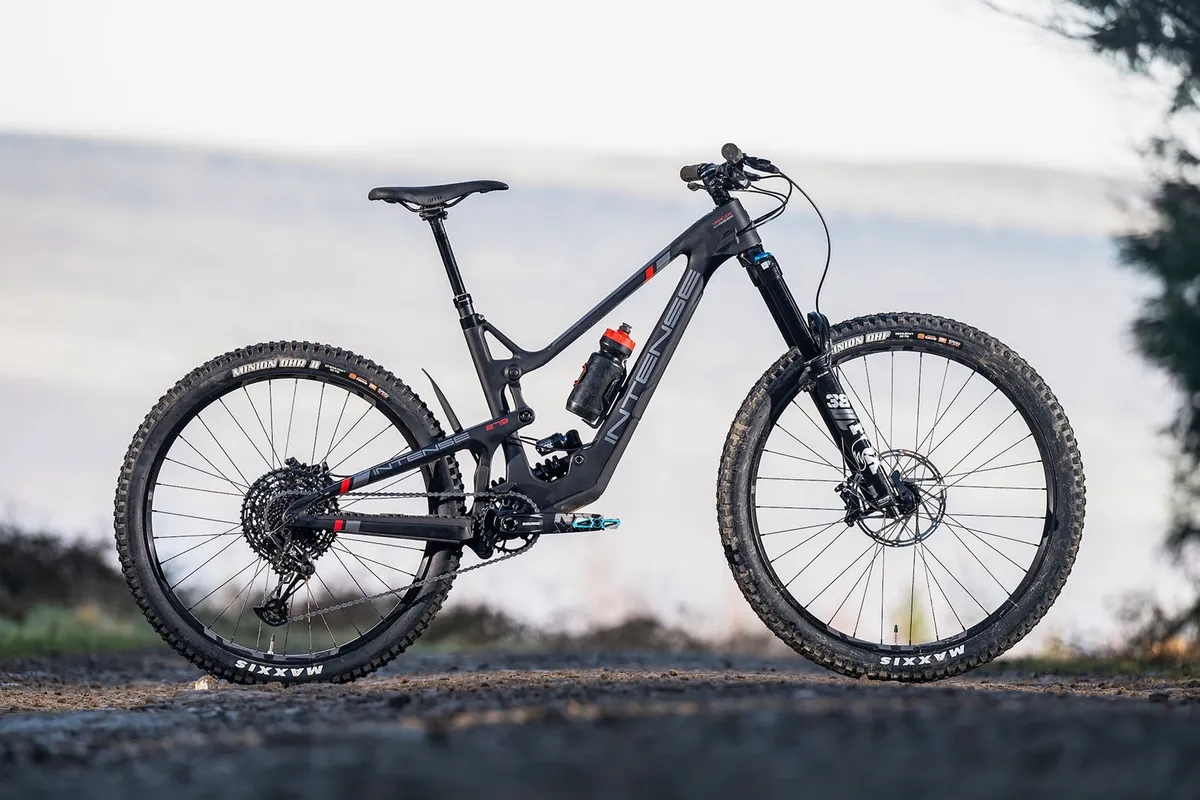
- Price: £4,999 / $5,499 / €5,499 as tested
- Pros: Impressive frame details; useful toolkit and internal storage
- Cons: Heavy SRAM NX Eagle cassette
The Tracer 279 Expert is the American brand's mixed wheel-size enduro bike with 170mm of suspension travel front and rear.
Intense has paid attention with the frame, with the fancy carbon adorned with titanium hardware and featuring functional fenders to keep mud away from the rear shock.
The bike uses a full SRAM NX Eagle drivetrain, and a Fox DHX2 Performance Elite coil shock translates into a relatively hefty bike. However, efficient suspension anti-squat and a comfortable pedalling position make winching to the top of a trail bearable.
Downhill, the bike provides plenty of support and impresses with its bump swallowing on square-edge hits, while the mullet wheel size and modern geometry keep the Tracer manoeuvrable through tight and technical trails.
The Tracer doesn't provide the best value for money, but the frame has plenty of performance potential with some upgrades.
SCOR 4060 LT GX
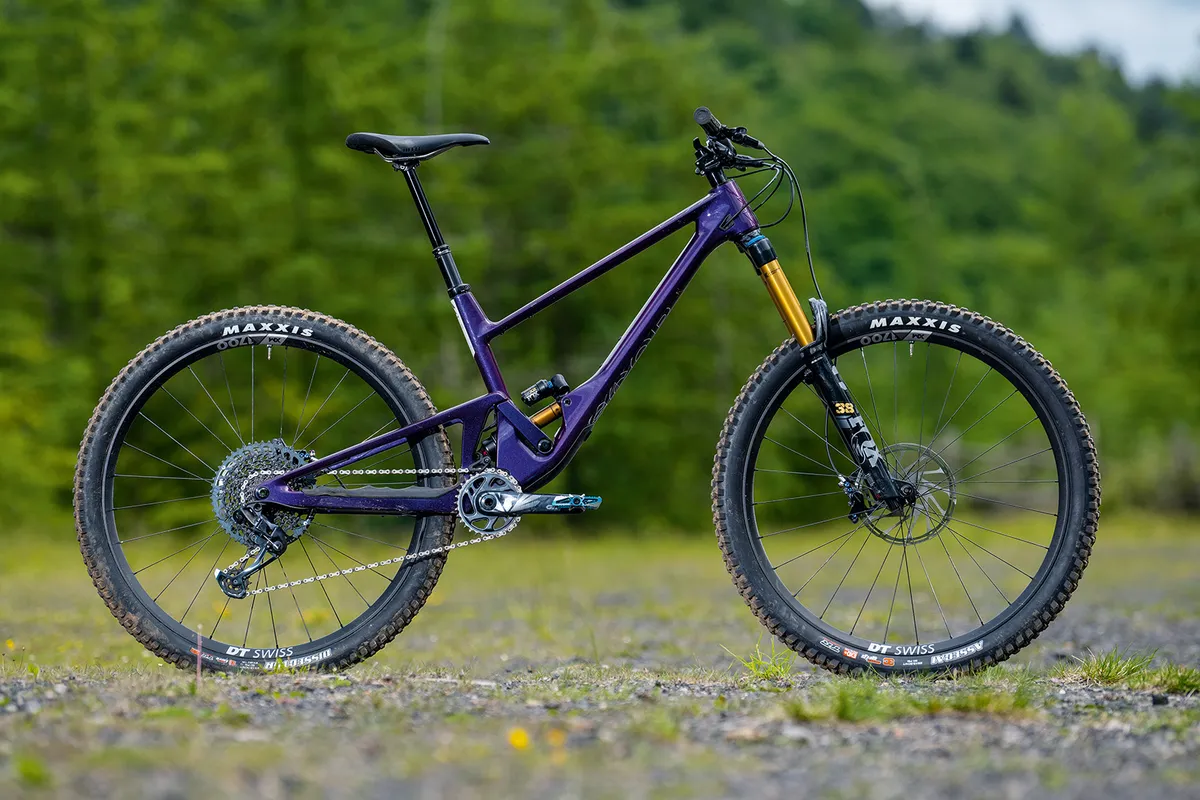
- Price: €6,899 / $7,199 as tested
- Pros: Very efficient to pedal
- Cons: High bottom bracket
SCOR is Swiss brand BMC's enduro division, with this 4060 LT GX featuring 29in wheels and 160mm of rear-wheel travel.
The bike is nearer to an aggressive trail bike than it is to a downhill bike, and its low weight and snappy geometry give a feeling of eagerness even at moderate speeds.
The 348mm bottom bracket height doesn't give the most planted feel through turns, although this doesn't take away from the bike's sense of fun. While not suited to the steepest, roughest trails, the 4060 LT GX provides a great all-round ride.
How we test enduro bikes
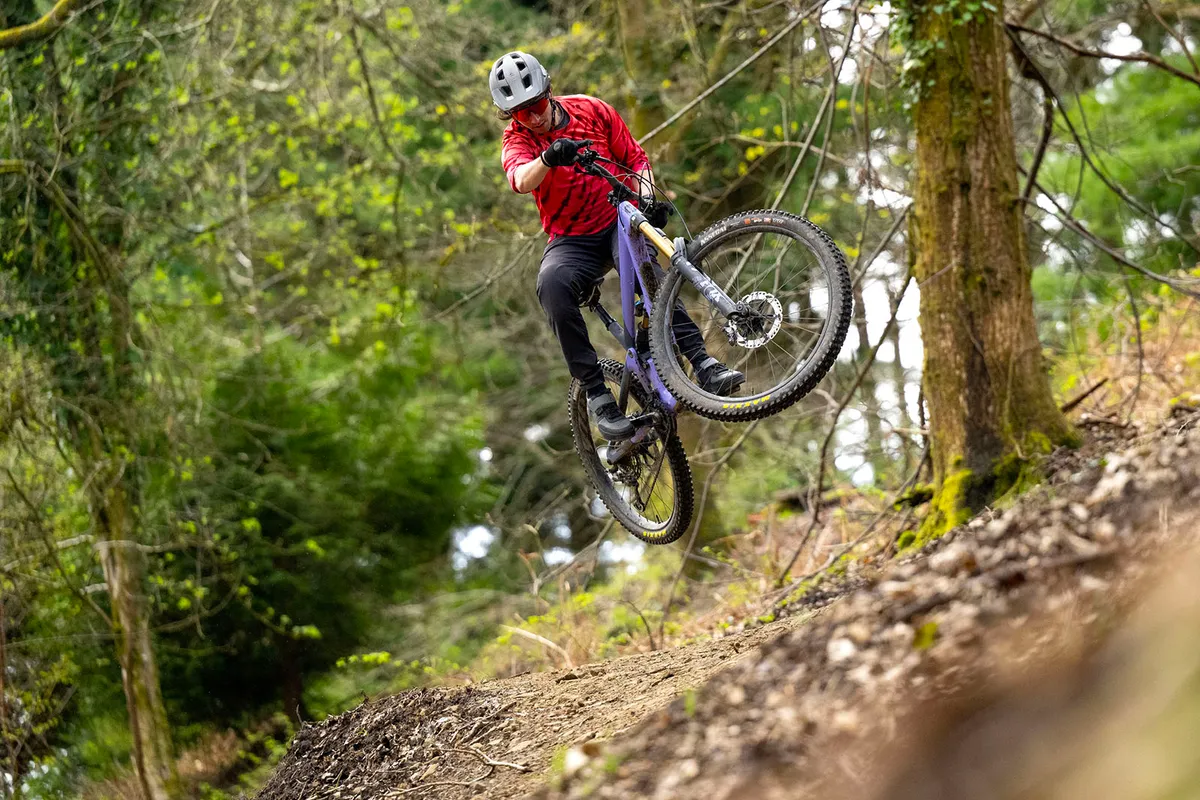
We test enduro bikes in their element, out on the gnarliest trails to push them through their paces.
The latest enduro bikes have become quiver killers, so we make sure to ride the bikes on mellower trails, as well as downhill trails, to spot any weaknesses.
Ultimately, we base our enduro bike reviews on the following criteria:
- Suspension characteristics – their ability to iron out bumpy trails and the support given when under load. We also consider how lethargic a bike feels on smaller gradients.
- Handling characteristics – how well they ride on tight, technical trails and how they position you on steep terrain.
- Value versus the competition – considering specification and ride experience against other bikes in the market and determining whether it's a good deal.
- Subjective reflections – our testing always aims to be objective, but we also recognise that some features and characteristics will suit individuals differently. We aim to reflect these in our reviews, giving you the information you need to make the best buying decision.
Why you can trust BikeRadar
BikeRadar has been an authority on bikes and cycling tech since its inception in 2007, delivering the world’s best riding advice.
We have experts testing all types of bikes, parts, clothing and accessories, from road, mountain and gravel bikes to commuting, bikepacking and electric bikes.
Our reviews are always editorially independent – with no exceptions. Our reviewers comprehensively test all products in the real world, always reflecting on performance, value and the wider market when delivering their verdicts and review ratings.
We have more than 15,000 product reviews available at your fingertips, as well as expert buying, maintenance, training, skills, health and fitness advice.
Our annual Bike of the Year test is an industry benchmark and the BikeRadar team consists of some of the most experienced riders and testers in the business.
What is an enduro bike?
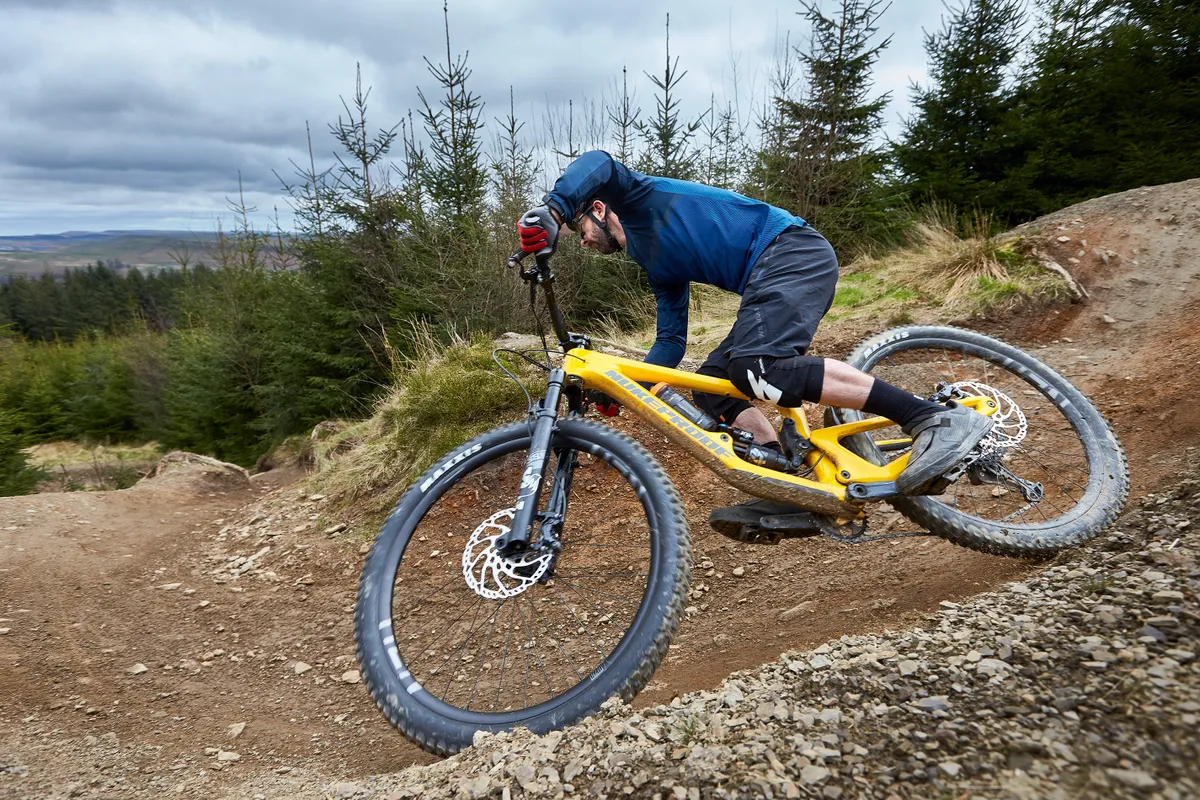
Which came first, enduro racing, or the enduro bike? It's a bit chicken and egg, but the race genre and the bike genre have pushed each other's limits, and driven development of bike tech far beyond the confines of the course tapes.
Enduro bikes sit in the middle ground between downhill bikes and trail bikes. Like a DH bike, they're designed to get down hills as fast as possible, tackling chunky rock gardens, matted root beds, big drops and canyon-like gaps, doing it all with a little less suspension travel.
However, like the best trail mountain bikes, they're also designed to be pedalled back up; so rather than pushing to the top of the track, they can be ridden up thanks to more suitable geometry, wider gear ranges and lighter builds than a DH bike.
As such, they're slightly less capable downhill than a DH bike, but far more capable up, and more capable down but less capable up than a trail bike… got it?!
How much travel does an enduro bike have?
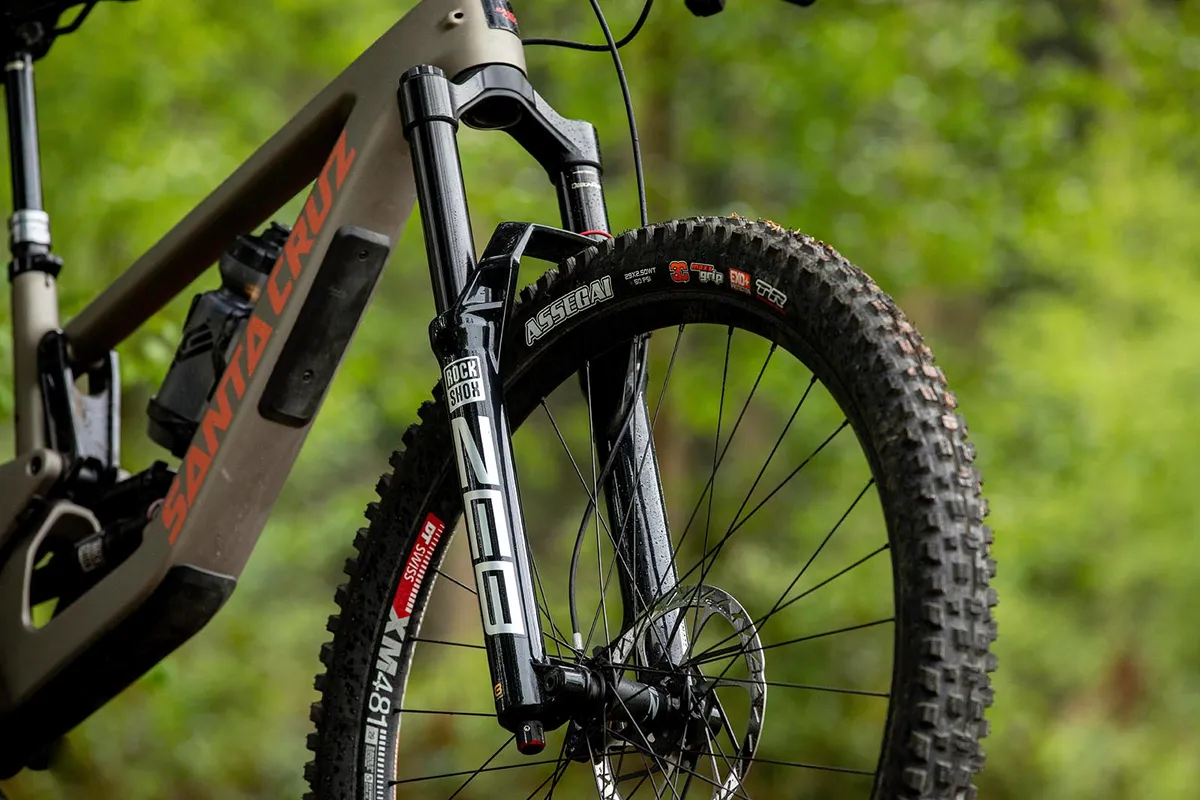
While there's no set definition of travel that defines an enduro bike, the majority have between 150 and 170mm of suspension front and rear. Some 27.5in-wheel enduro bikes may push travel a touch higher and there are a few with a little less at the rear – usually 29in bikes.
Expect to see the burliest single-crown suspension forks a brand has to offer with stanchion diameters varying from 35mm to 38mm. They're built to be stiff, smooth and supportive, with higher-end models sporting plenty of adjustability.
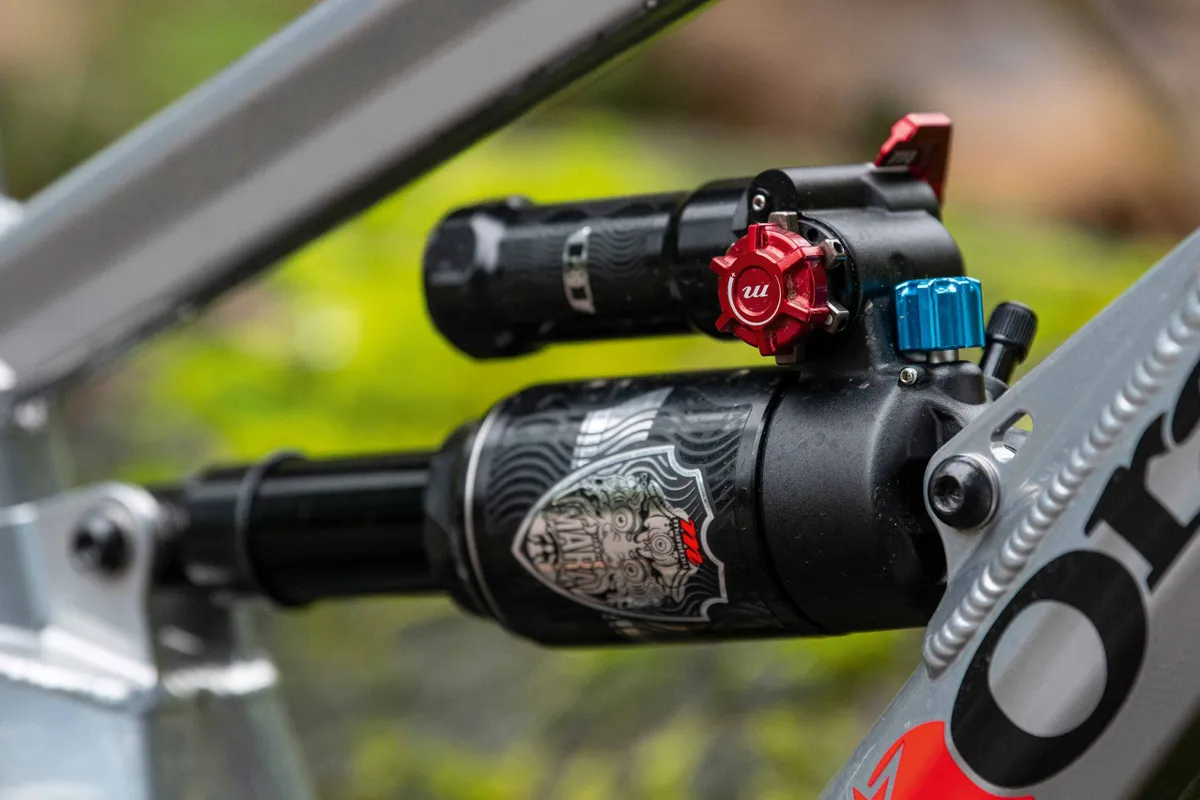
Rear shocks, especially when you're buying bikes from the mid-range up, will have a 'piggyback' design.
This is an additional chamber connected to one end of the shock that allows for additional oil flow through the shock. This, then, allows for better temperature management and more consistency on long descents (you'll be surprised by how warm a shock can get in use).
How the bikes use that suspension travel will vary too. Some bikes have incredibly plush suspension that totally insulates you from the trail, leading to an incredibly planted feel that's fast on steep and rough terrain.
But with all that smoothness comes more pedal-induced movement, so these bikes can often feel sluggish on climbs and flatter tracks – you'll be reaching for a lockout lever much sooner.
However, some bikes will have a more pedal-friendly suspension, which will make the uphills much easier and the flatter tracks more fun. You may lose some of that buttery feeling when you're going flat-out over rocks and roots, though.
Enduro bike geometry – what's that about?
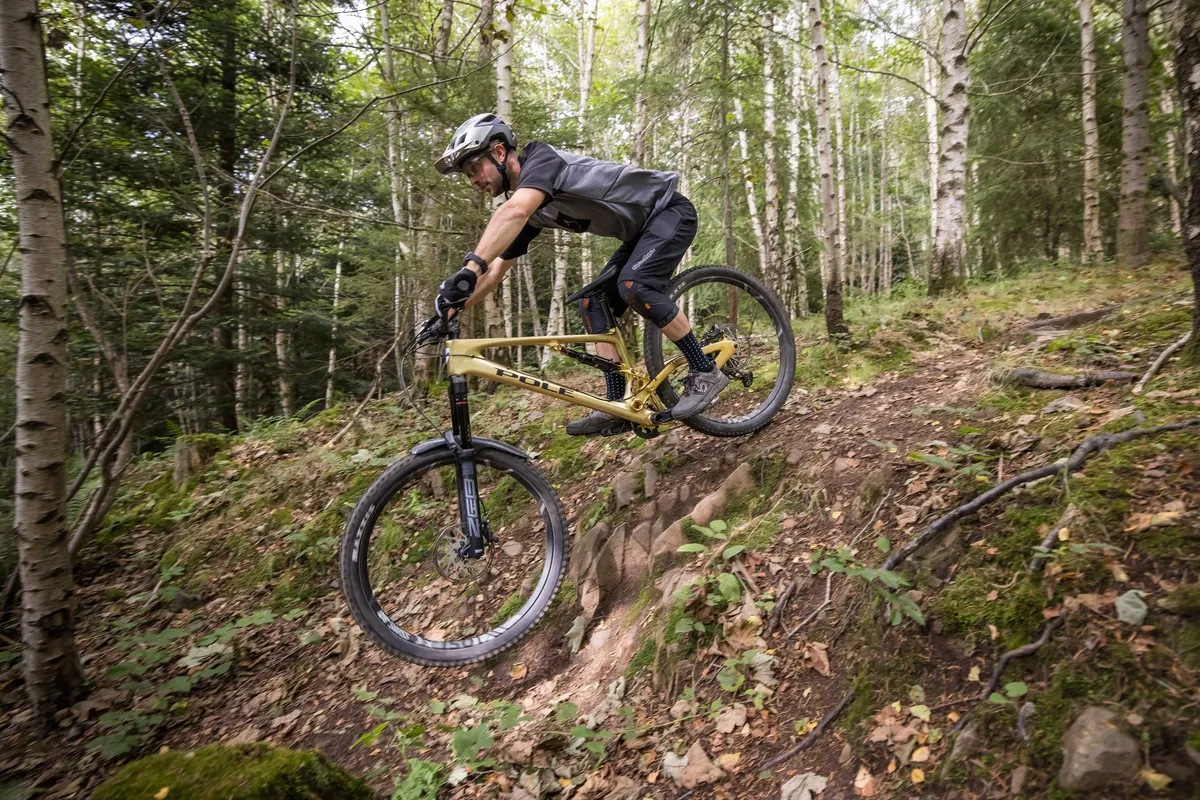
The latest enduro bikes have long, low and slack geometry. This means long front centres (and reach measurements), slack head angles and low bottom brackets. This makes them feel super-confident on steep hillsides because there's less chance of you flipping over the handlebars, and it helps you better manage weight and grip between the tyres.
Longer geometry can make the bikes a little slower to react to inputs, and sometimes you may find you need to re-address your riding technique to get the most agility out of them, but these bikes have descending speed at the forefront of their design.
